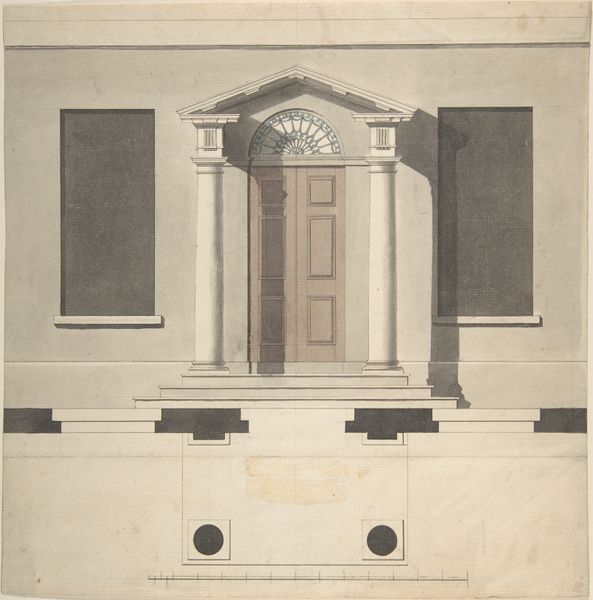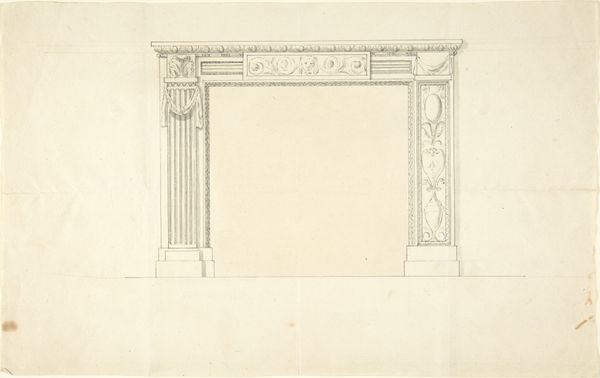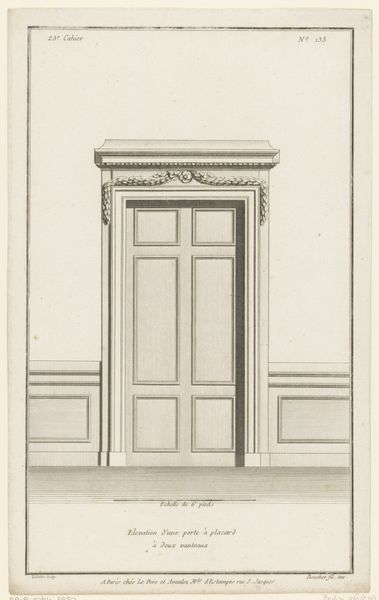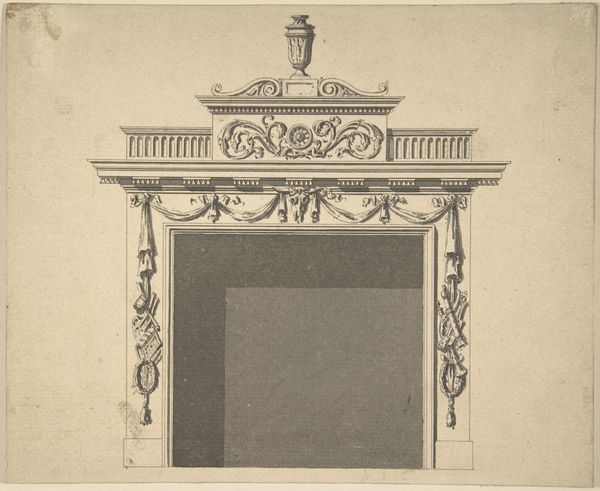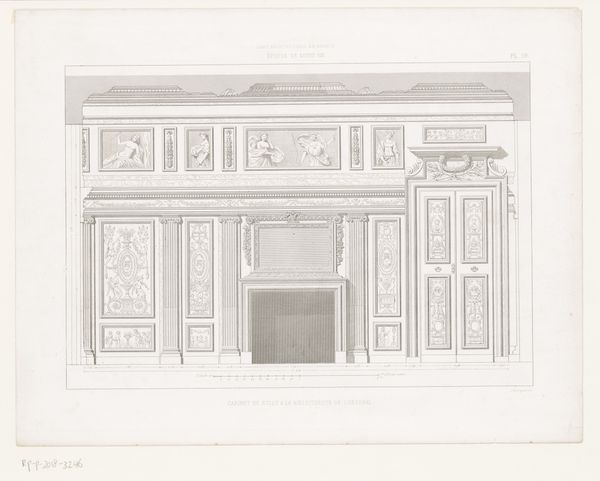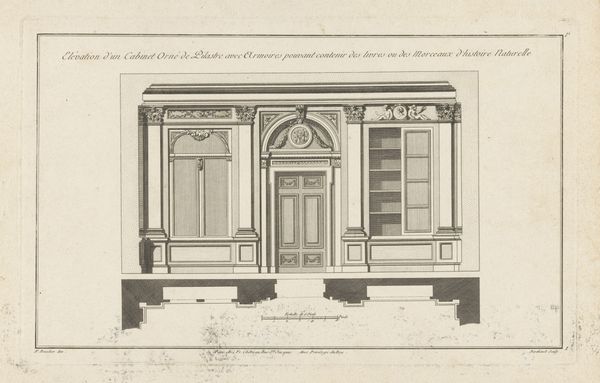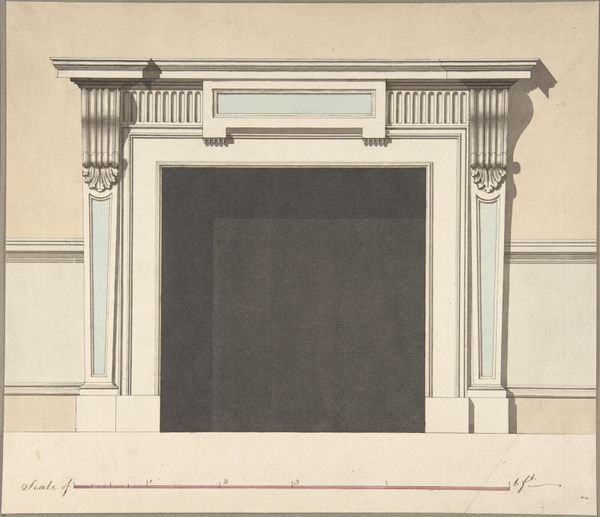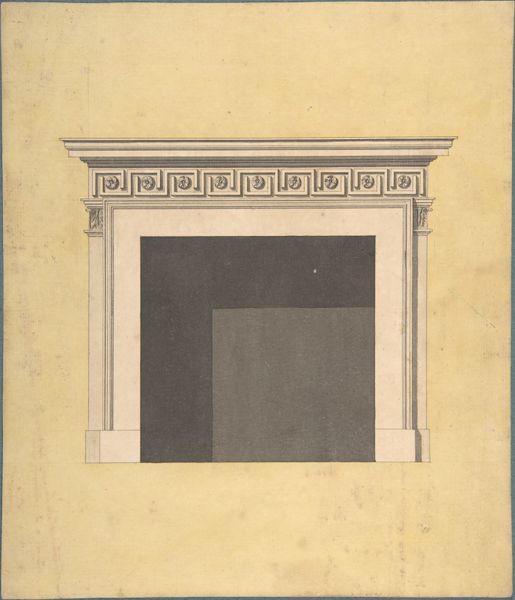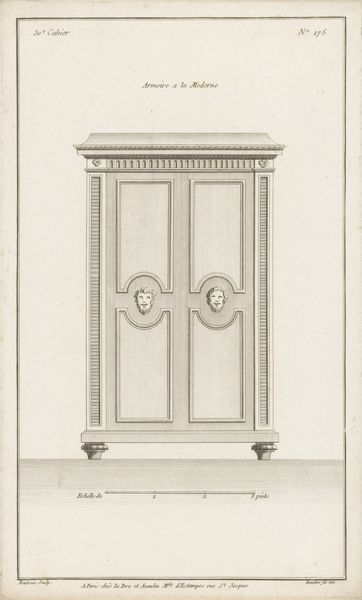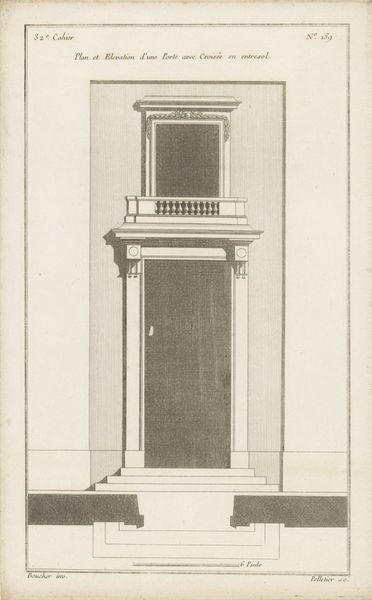
Design for a Doorway with a Portico in the Classical Style 1700 - 1800
0:00
0:00
drawing, print, paper, engraving, architecture
#
drawing
#
neoclacissism
# print
#
classical-realism
#
paper
#
geometric
#
engraving
#
architecture
Dimensions: sheet: 7 1/2 x 7 3/8 in. (19.1 x 18.7 cm)
Copyright: Public Domain
Editor: Here we have "Design for a Doorway with a Portico in the Classical Style," made sometime in the 18th century by an anonymous artist. It's rendered in drawing, engraving and print on paper. There’s a subdued elegance to this architectural design, a quiet grandeur that seems to beckon and invite. What catches your eye when you look at this drawing? Curator: What strikes me is the conscious display of material control and classical ideals. Consider the means of production here: drawing, engraving, print – all meticulous, demanding skill and adherence to a specific aesthetic. These weren’t quick sketches; they were blueprints, showcasing the artist's mastery over materials to achieve the effect of power and permanence associated with classical architecture. This portico design isn't just about aesthetics. It's about a certain societal aspiration reflected in material form. How would a structure like this have served its commissioners? Editor: You're right. It's about showcasing wealth and power through this controlled classical design. So it's about material and labour. But the anonymity also raises questions, doesn't it? Who was the draughtsman and where might it have been realised? Curator: Exactly. The anonymous signature invites reflection on labor itself, obscuring the individual while emphasizing the collective effort in propagating architectural standards and a mode of thinking. The materiality of paper and ink transforms the artistic labour into an reproducible idea that spreads through prints. What do you think that says about its purpose? Editor: It moves beyond personal expression into more standardised design accessible for potentially widespread reproduction! Seeing the design laid bare like this illuminates not just the art, but its function, doesn't it? The way its made *is* its meaning, and part of history too. Curator: Precisely. We start looking beyond individual genius to the forces that shape our material world and our perceptions of it.
Comments
No comments
Be the first to comment and join the conversation on the ultimate creative platform.
